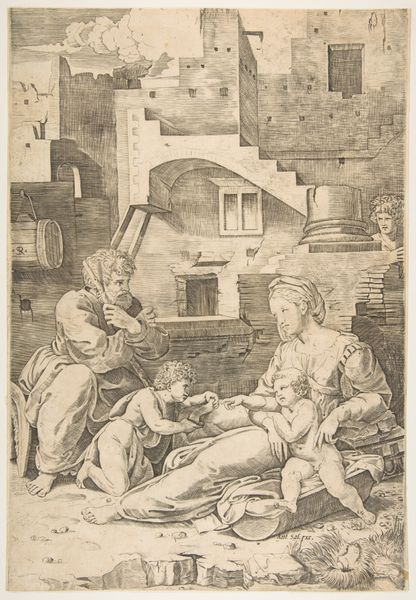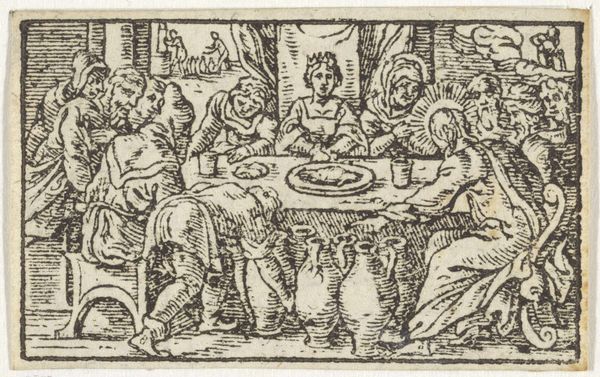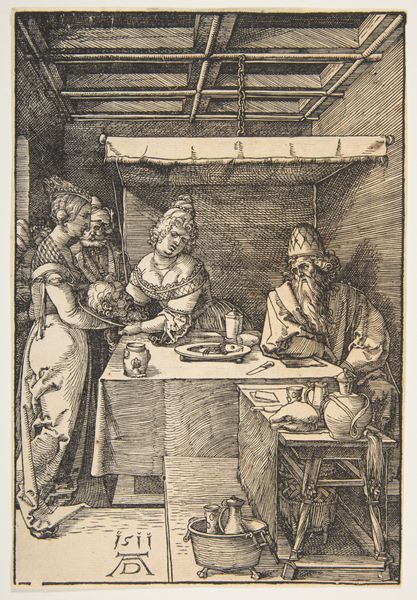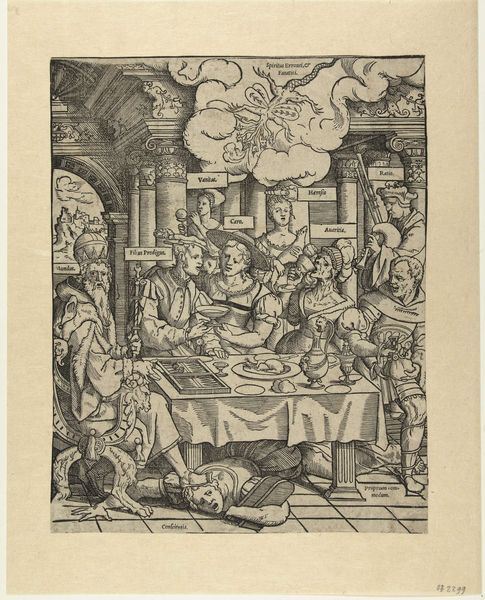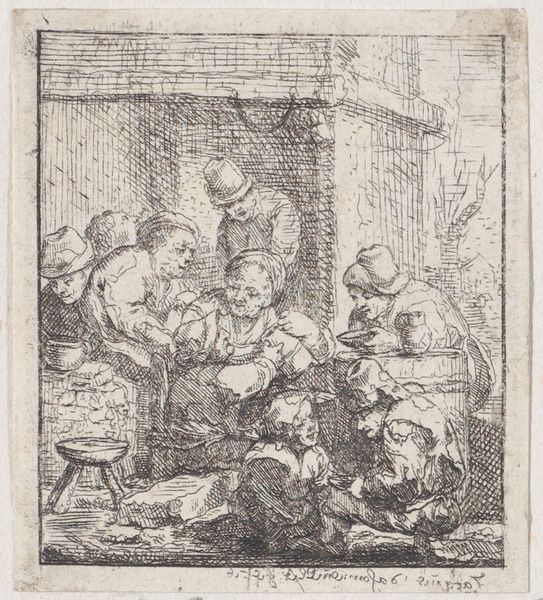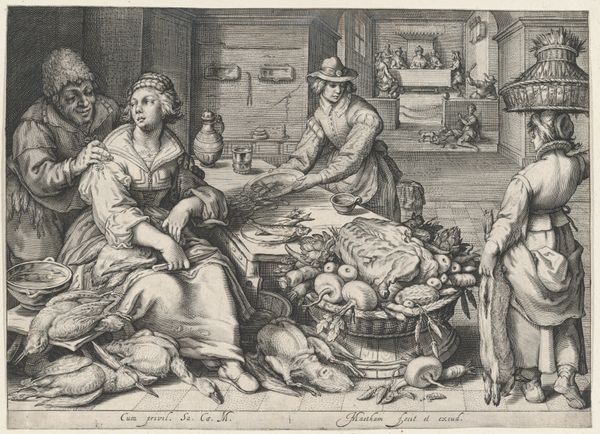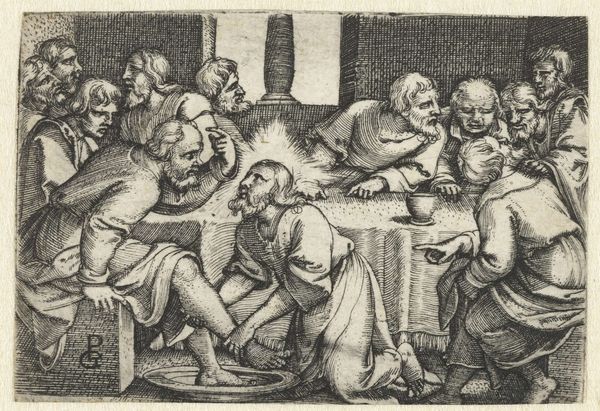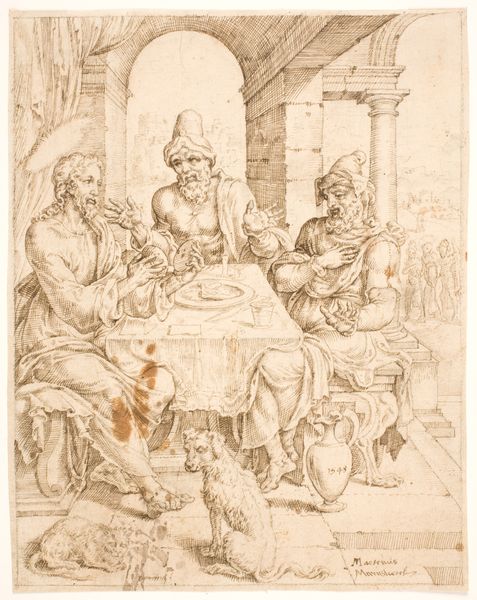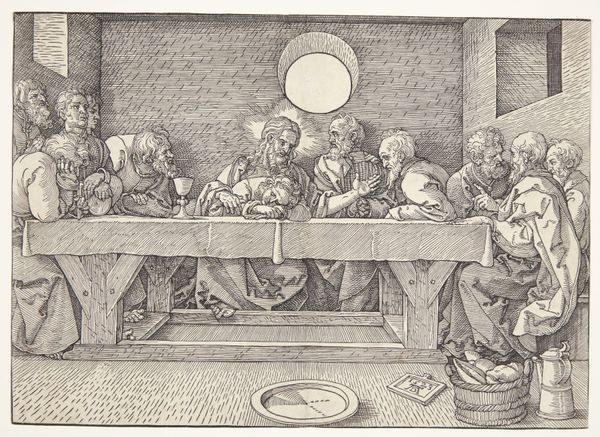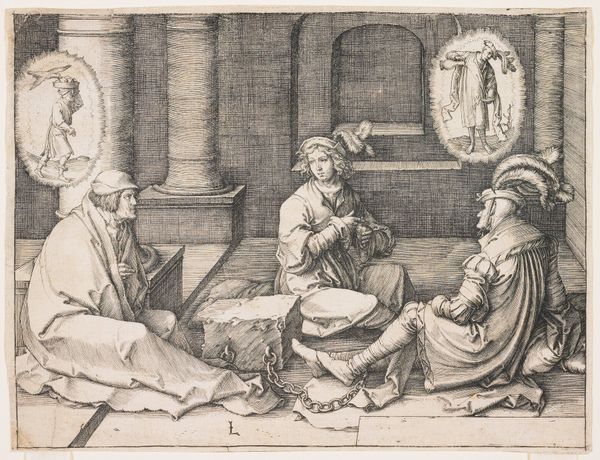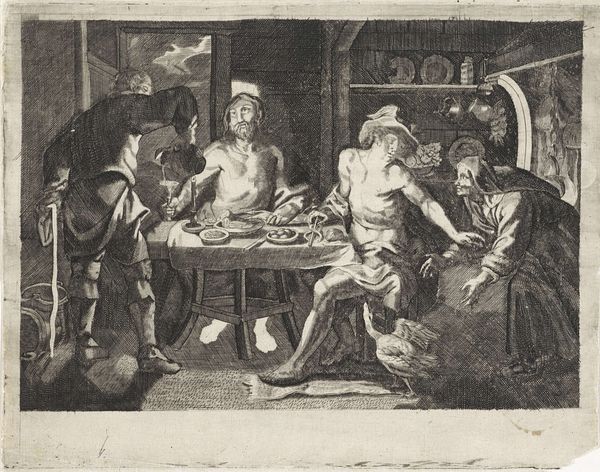
Christ at the Table of Simon the Pharisee c. 1541 - 1545
0:00
0:00
print, engraving
# print
#
figuration
#
11_renaissance
#
genre-painting
#
northern-renaissance
#
engraving
Dimensions: 1 1/2 × 3 1/16 in. (3.81 × 7.78 cm) (sheet)
Copyright: Public Domain
Sebald Beham created this engraving, "Christ at the Table of Simon the Pharisee," in the first half of the 16th century. Beham was a German artist working during the Reformation, a period marked by religious and social upheaval. In this tiny print, Beham captures a biblical scene where a woman, traditionally interpreted as a prostitute, washes Christ's feet with her tears and dries them with her hair. This act of devotion challenges the social norms and expectations of the time. While the other figures at the table, presumably religious leaders, look on with skepticism or judgment, Christ accepts the woman's gesture, offering her forgiveness and acceptance. The contrast between the woman's humility and the men's apparent self-righteousness highlights the gospels’ radical message of grace and inclusivity. Beham’s work invites us to reflect on the complex intersections of gender, morality, and religious authority in the 16th century, and perhaps even today.
Comments
No comments
Be the first to comment and join the conversation on the ultimate creative platform.

